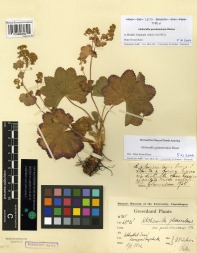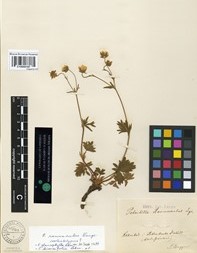Greenland herbarium
 Curator
Curator
Collection managers
About the collection
The Greenland herbarium is the world’s largest collection of flowering plants, gymnosperms and vascular cryptogams from Greenland. It holds at least 525 species, most of which are represented by numerous collections.
The most important collectors are: T.W. Böcher, B. Fredskild, P. Gelting, M.P. Porsild, Th. Sørensen, J. Vahl. The oldest preserved plants from Greenland belong to Egede’s book herbarium. The oldest specimens on loose sheets were collected by Jens Vahl 1828‒1829 during his participation in V.A. Graah’s expedition.
The Greenland herbarium is a unique resource for documenting historical floristic diversity patterns in one of those places in the world that are most heavily affected by global warming. Besides, the comprehensive material that is accommodated for most species offers excellent opportunities for studying intraspecific variation along climatic gradients.
 Greenland herbarium in numbers
Greenland herbarium in numbers
- Estimated number of specimens/collections: The herbarium comprises c. 181,000 specimens. The vast majority is mounted on herbarium sheets, but c. 350 specimens are alcohol-preserved and kept in vials.
- Types: 185
- Digitally available specimens: All type specimens are registered in the type database with label data and images.
- Percentage digitized: c. 0.1%
Strengths
- The world’s largest collection of Greenland vascular plants.
- Collections from the Greenland Botanical Survey 1962-1996.
Important subcollections
P. Egede’s herbarium, the herbarium of Poul Egede (son of Hans Egede), is a book herbarium dating back to 1739 and containing the oldest preserved botanical collections from Greenland.

Egede’s herbarium.
History
In 1843, the director J.F. Schouw reorganized the herbarium collections of the Botanical Garden into five herbaria. One of these, the herbarium of Arctic Vascular Plants, included the plants from Greenland, Iceland, Svalbard, northernmost Scandinavia, and later also Faroe Islands. All but the Greenland plants were later transferred to the General herbarium. The material from Scandinavia and Svalbard was removed first, followed by the Icelandic material in 1988 and the Faroese in 1992. Due to its history, the herbarium was up to recently called the “Arctic Herbarium”.
